Maintaining complex installations
Sometimes supporting existing installations require special skills
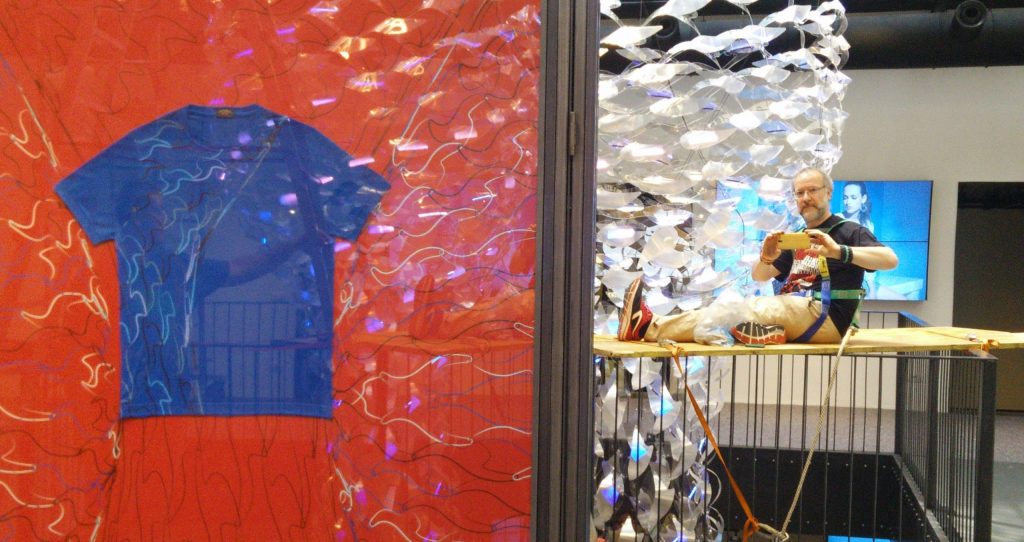
Made to last?
I have been working with designers, architects, artists and university students helping them to build, install, relocate and repair their creations. Some of these were planned for a one-shot, limited-time exhibition in some events like Fuorisalone. Some others were intended to last for months as happened for Biennale in Venezia. These are the cases where everything goes as planned and the installation’s life is carefully planned for what it should be.
Longer exhibition times require more care in the choice of materials and components, while a few days of the show allow the usage of temporary or last-minute patches to keep things together and working. But what happens when the installation is either so successful that it is kept on the show for a longer time or it even becomes a travelling installation requested around the world?
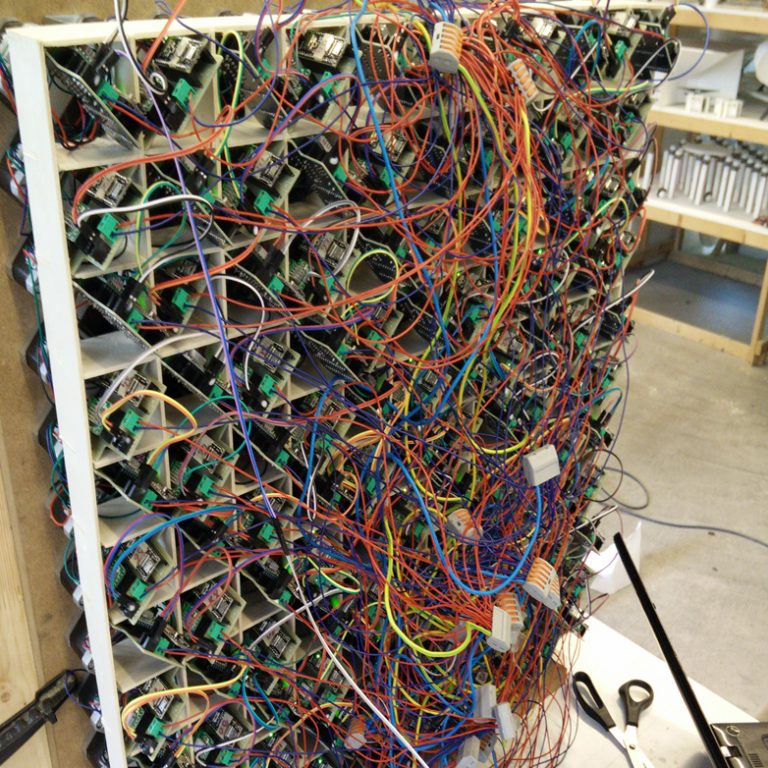
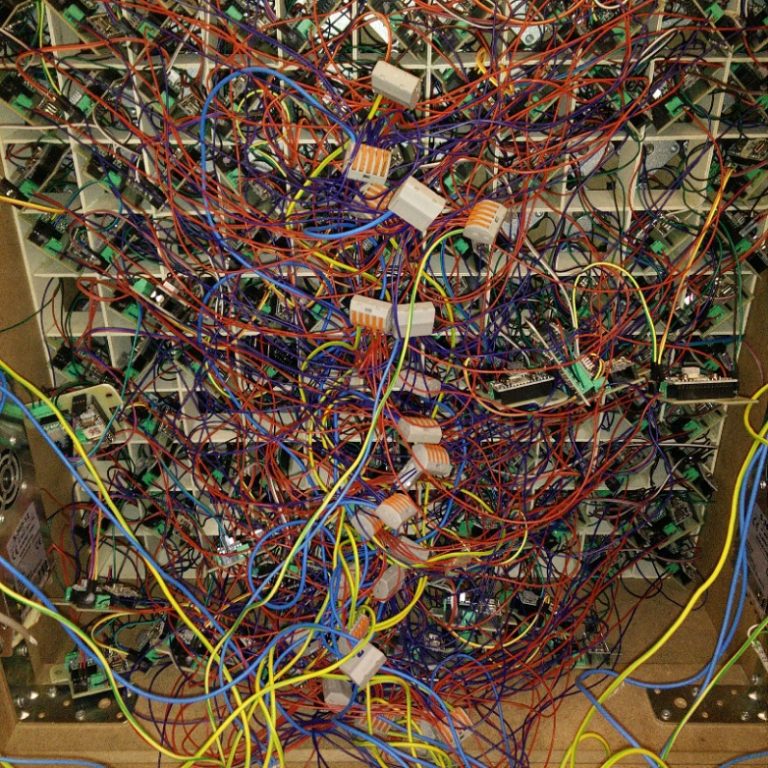
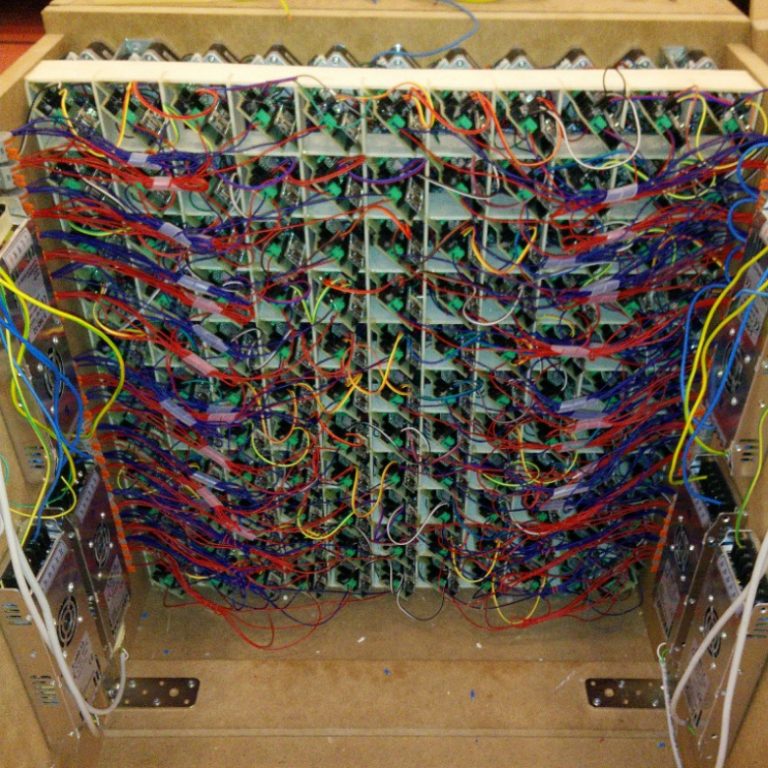
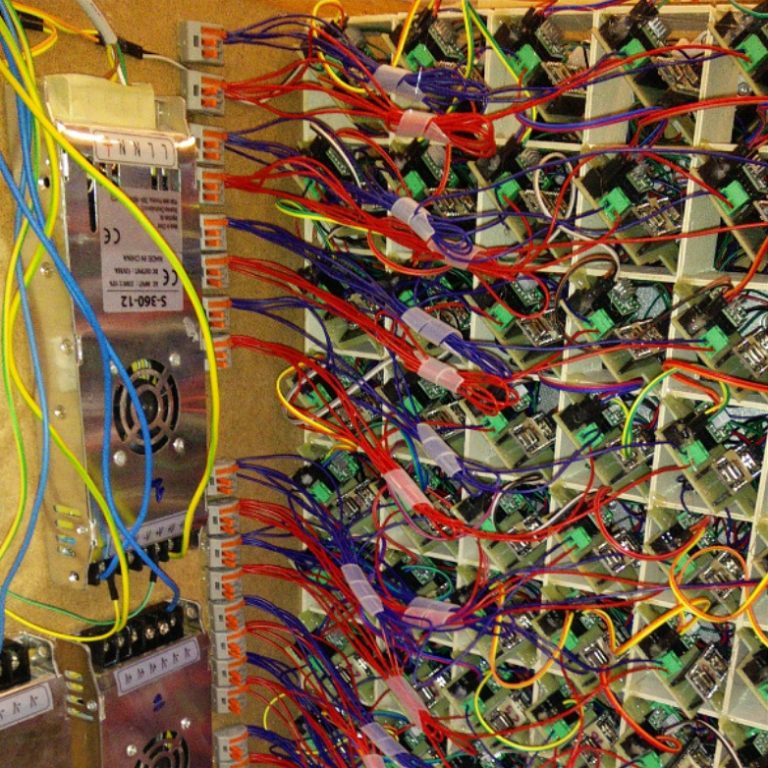
Planning releases
The first version of Spaces, for Seven Mechanical Architectures exhibit in Mendrisio in 2018 was built with a big effort of the student/author Georgios Voutsis because I had to share my time with more than one installation. He wasn’t very good at wiring and electronics; I gave him all the tools and information to build something that was working and I developed a simple test to run at every addition of a new board to avoid problems later on. Nevertheless, he wasn’t much concerned about cleanness and serviceability, so he ended up with the “spaghetti wiring” you can see in the first two pics of the carousel. I told him to hot glue the board in the slots to avoid movements and vibrations, but he didn’t do a great job.
The installation was moved with a transpallet in the Teatro dell’Architettura together with the other installations and on the night of the grand opening, it was perfectly working.
After that event, the installations had to be rearranged a little and the movement caused some boards to move and some wires to detach, as I was expecting. I was asked to “fix” it to work for the remaining three months, so a new release of the wiring had to be done. I had no other task going on so I was able to devote all my time to Space that, after one week of hard work, was completely rewired – using the same parts – in a more ordered and reliable way, as you can see in the last two pics of the carousel. In this case, we got it to work to meet the deadline, knowing that it had to be fixed later on
Travelling Art
This next installation was initially made for a gala dinner in Hong Kong for a high-class watch manufacturer. The curtain had a parametric design and was to be positioned as a linear surface. Other parts, with the same cogs theme, were put on the tables. Each cog had a small PCB with fifteen mini warm white LEDs and a SMD connector that cut through the wire insulation. All the weight of the cogs was carried by two steel wires connected to each cog by special pass through metal screws.
Setting up the structure required precision and patience, especially to follow the sequence of the columns and keep the structure well balanced on the steel wires. When the event was over, everything was taken down and put in a long crate, ready to be shipped to the Italian warehouse that made and stored many of the creations of Moritz Waldemeyer.
Fuorisalone 2016 in Milano was the occasion to put on show this installation for the second time, with a double spiral path to create a chandelier, and the addition of a mirror as top and another mirror as a base, creating an infinite visual structure. The space chosen was Rossana Orlandi Master Gallery and the room chosen was quite a small one. With over four meters of height and a top pelmet where the steel cables had to be secured and the power supplies hidden, the installation process wasn’t easy, but the team managed. The stress that this process created on the single cog’s PCB and the loosening of the steel wires fixtures created many unbalanced pieces, some detachment of the power wires and a few breaks in the solder joints on the PCB. That was my task: checking every single cog, rebalance it, reconnect if necessary and tighten the screws on the steel wires.
This event lasted a few days, with a lot of positive feedback. The team, of which I was part, took carefully everything down and put it back in the long (2 meters) wooden crate. Back to the warehouse.
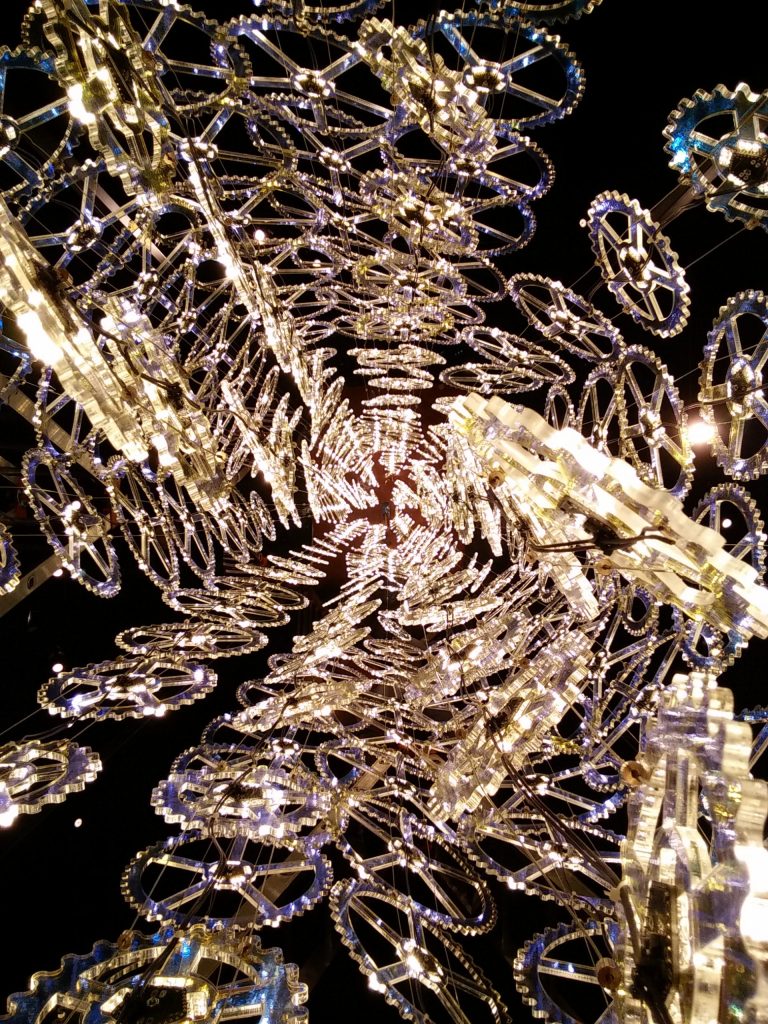
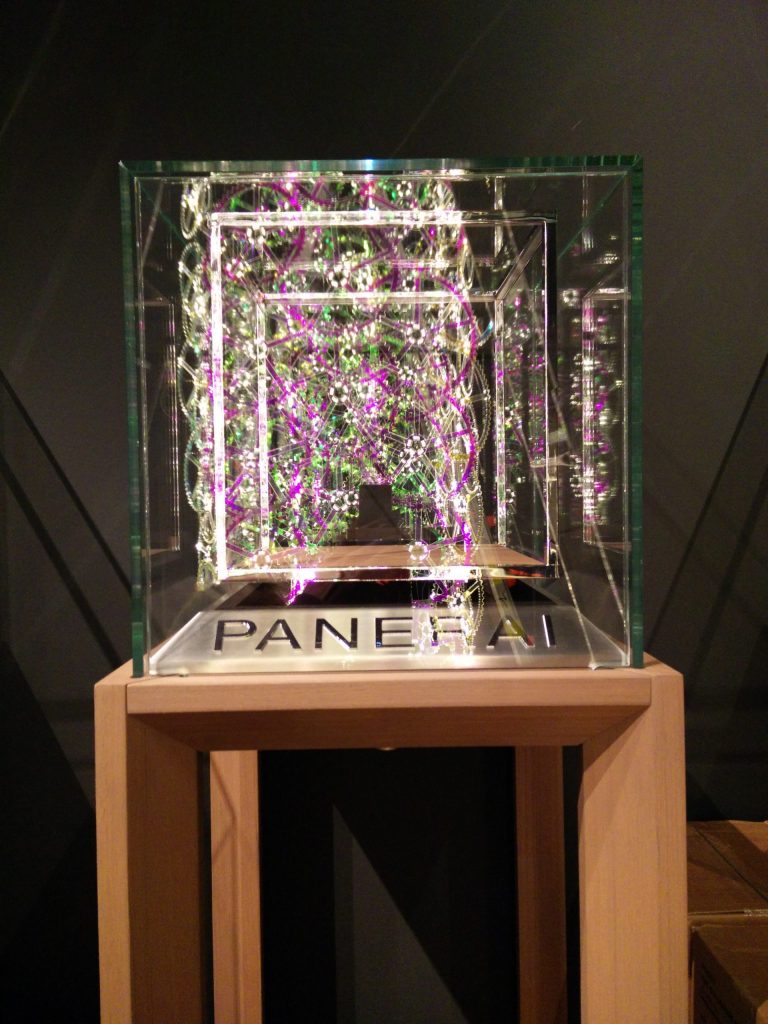
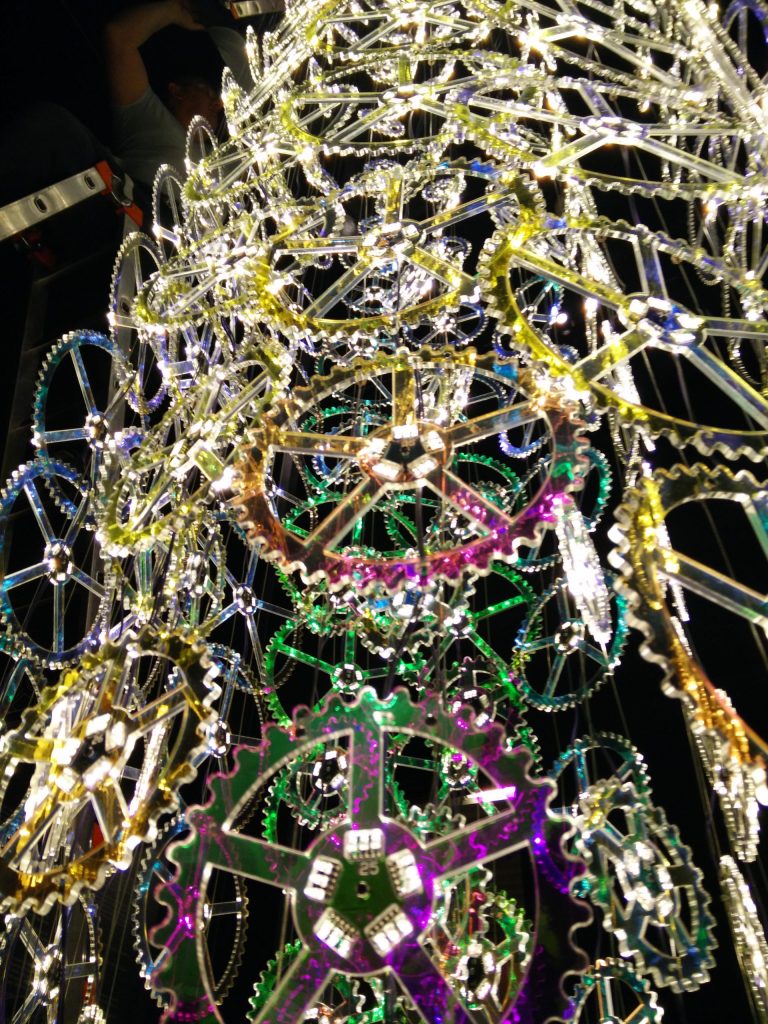
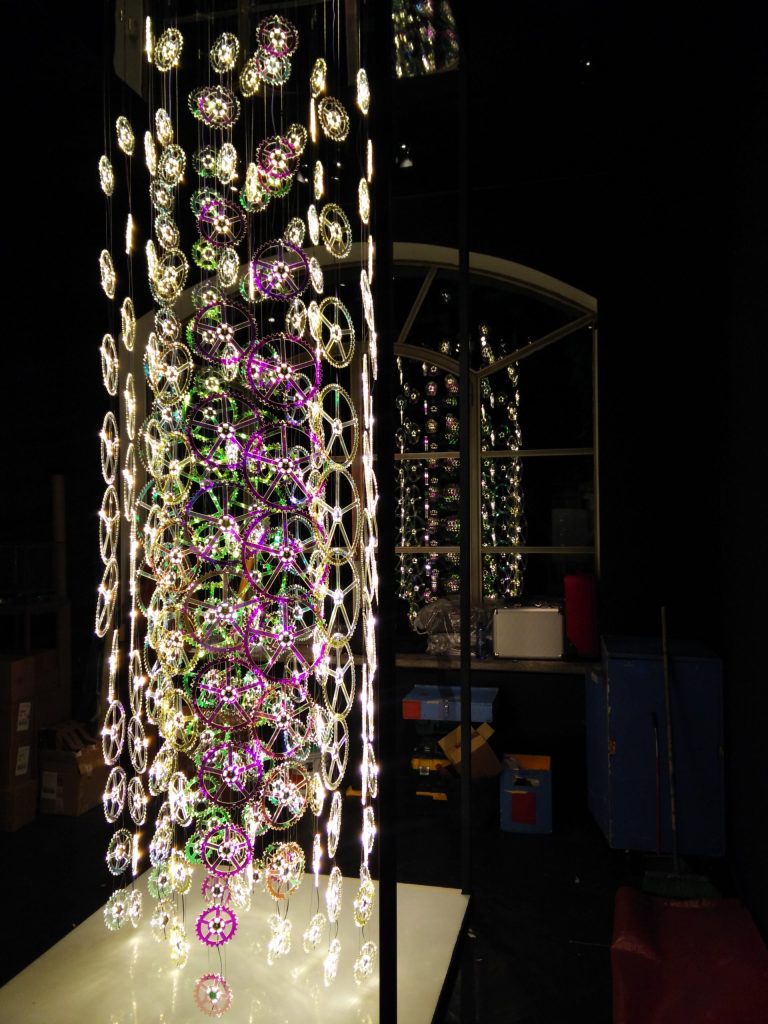
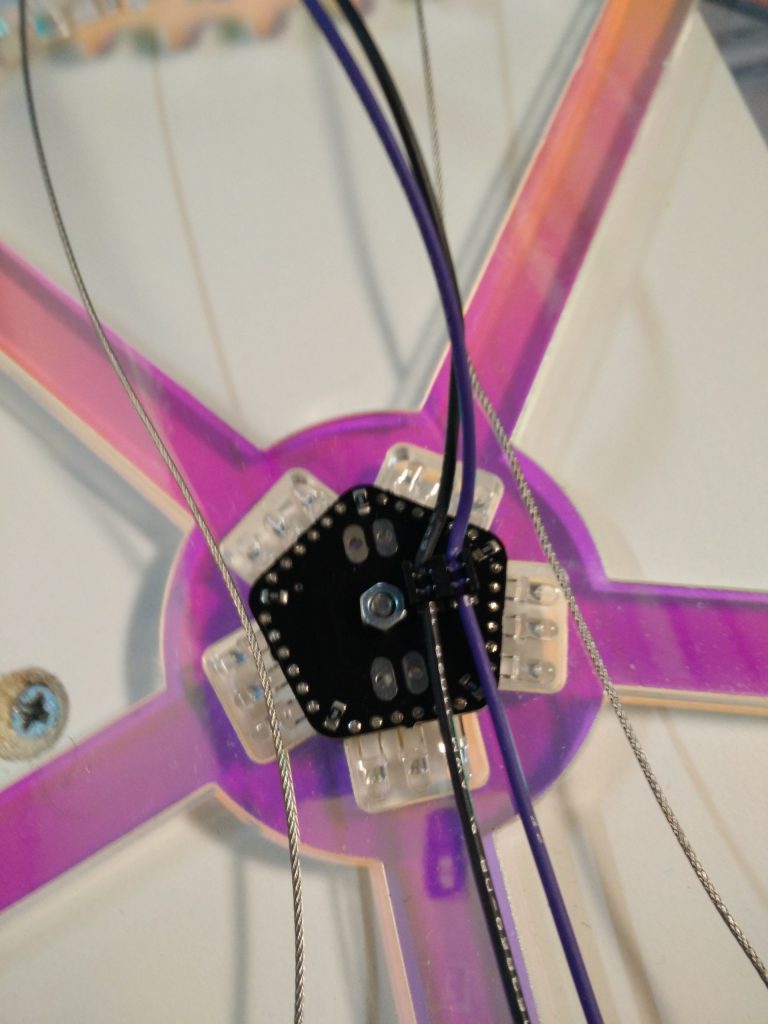
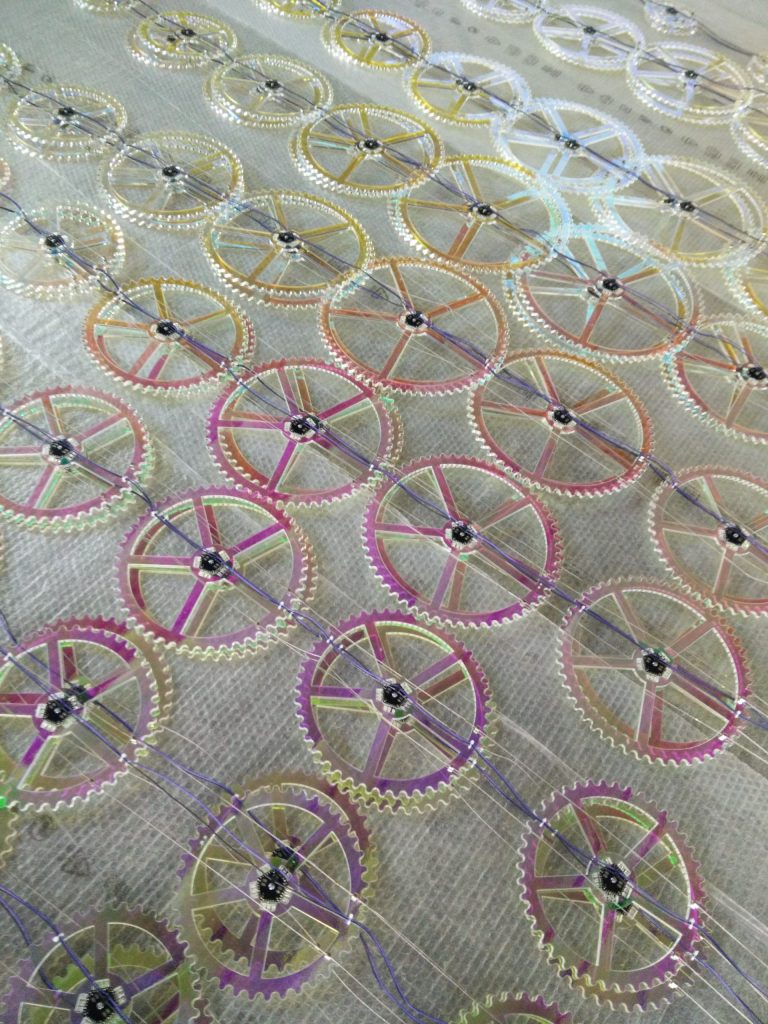
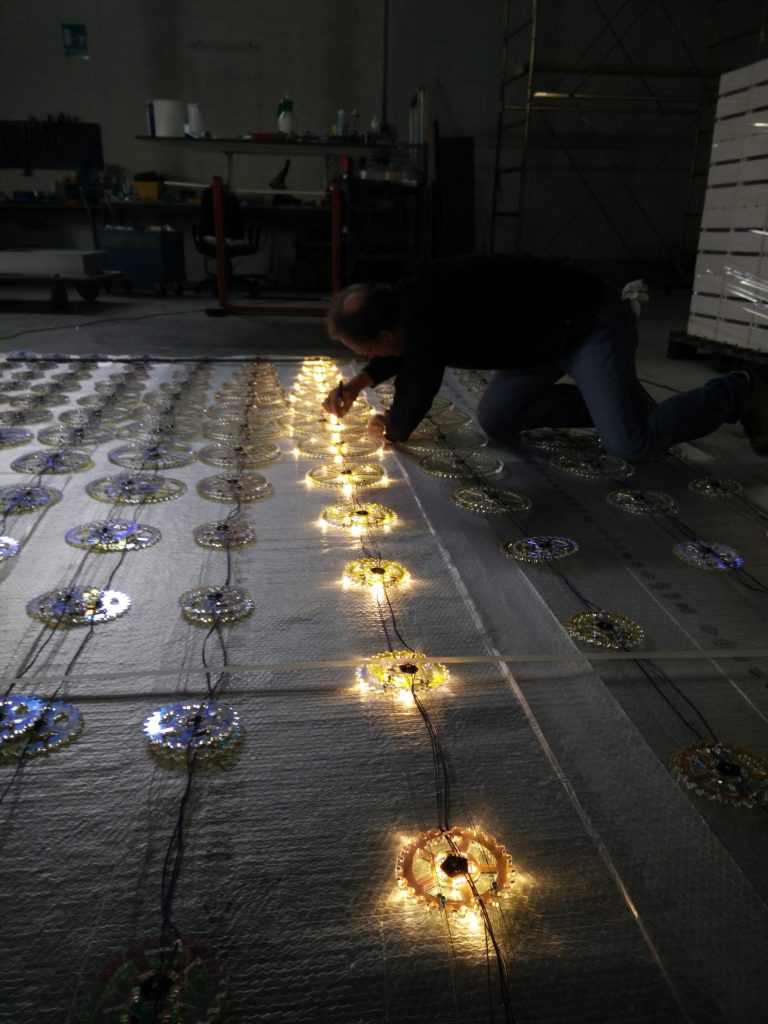
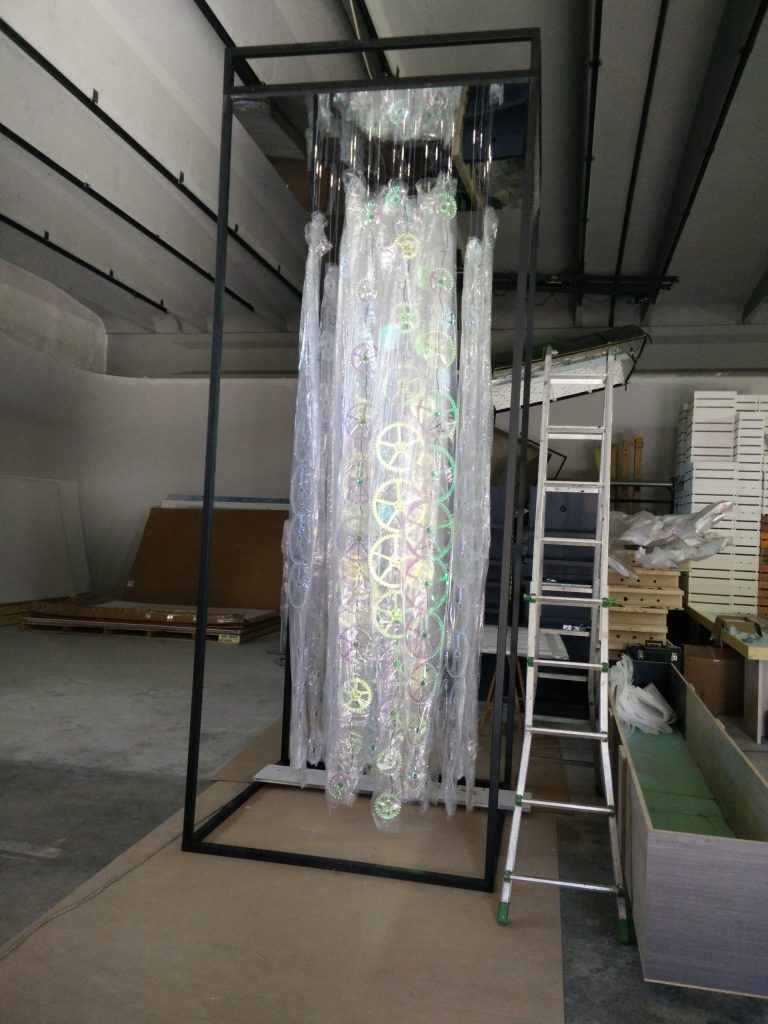
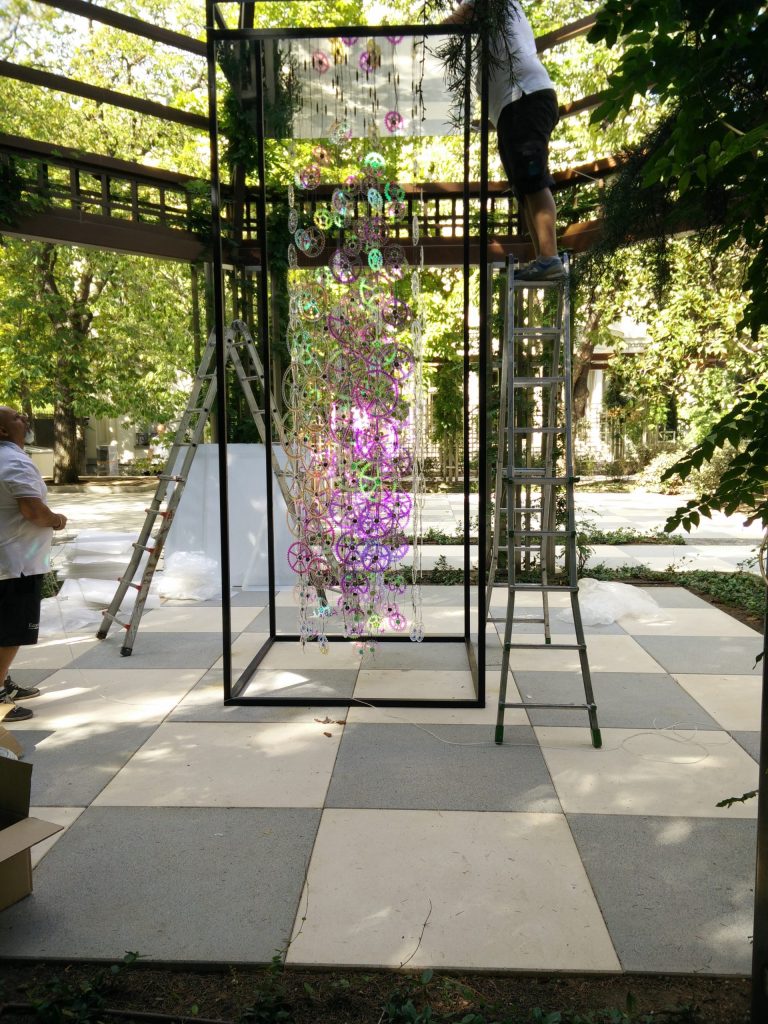
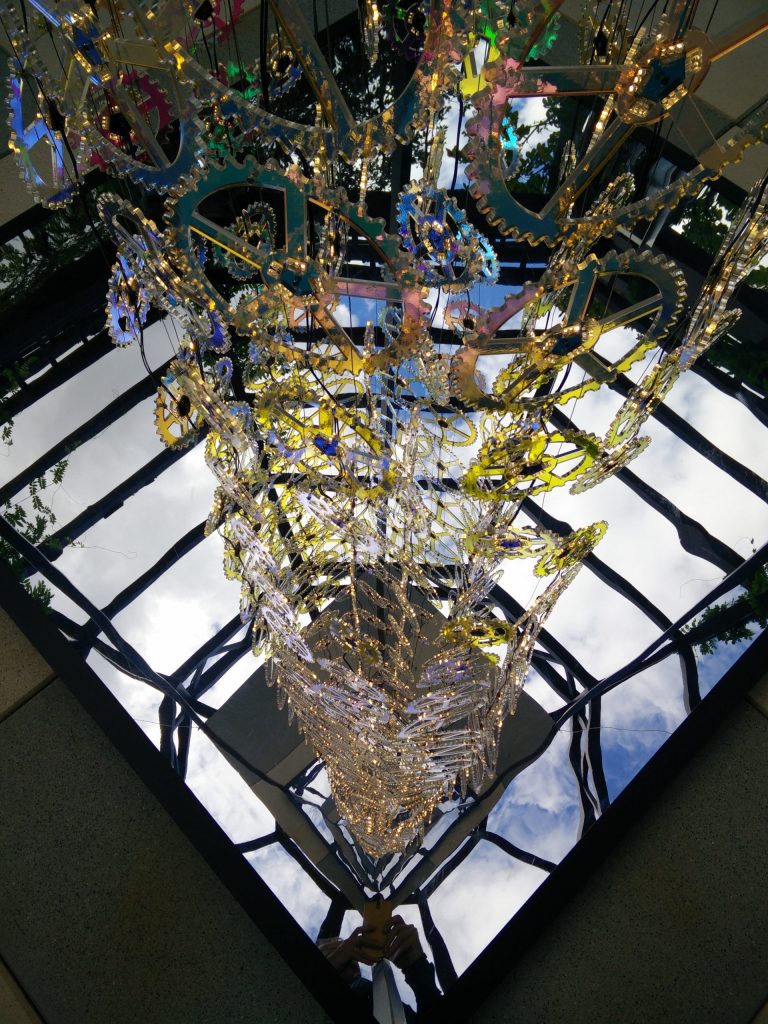
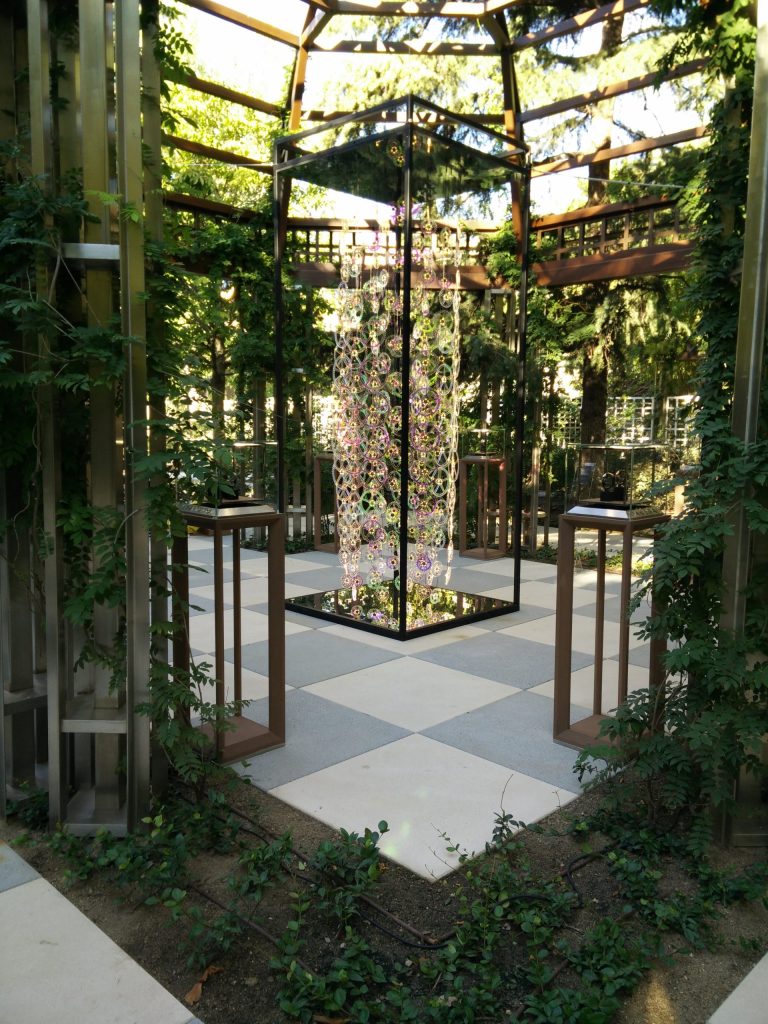
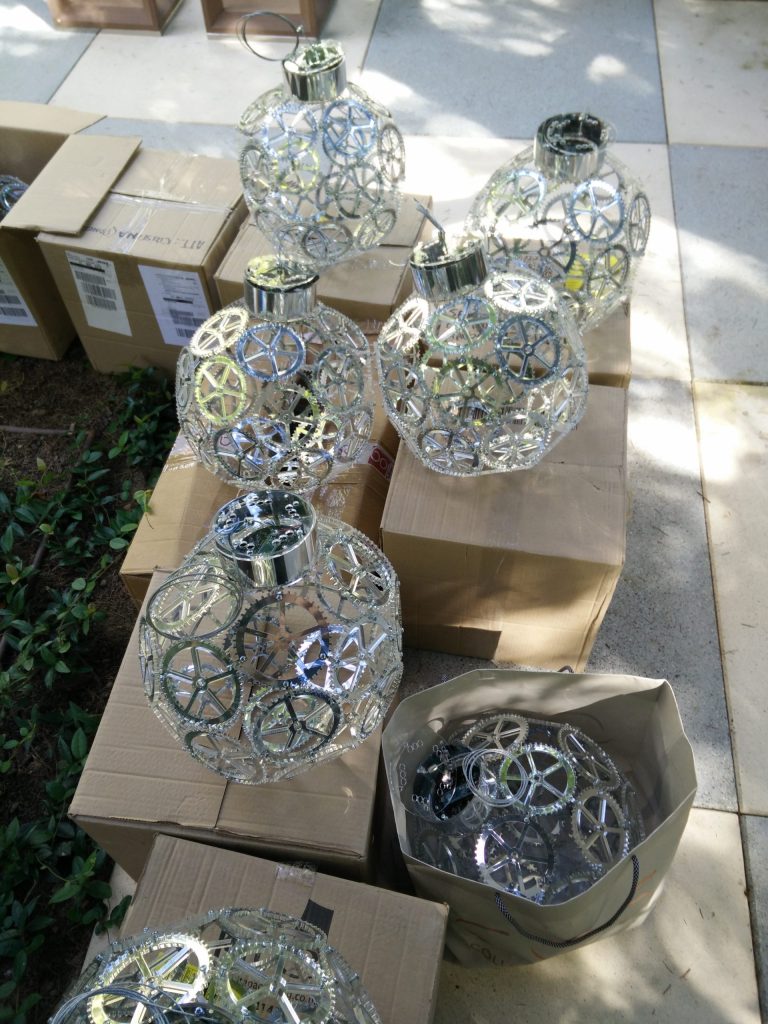
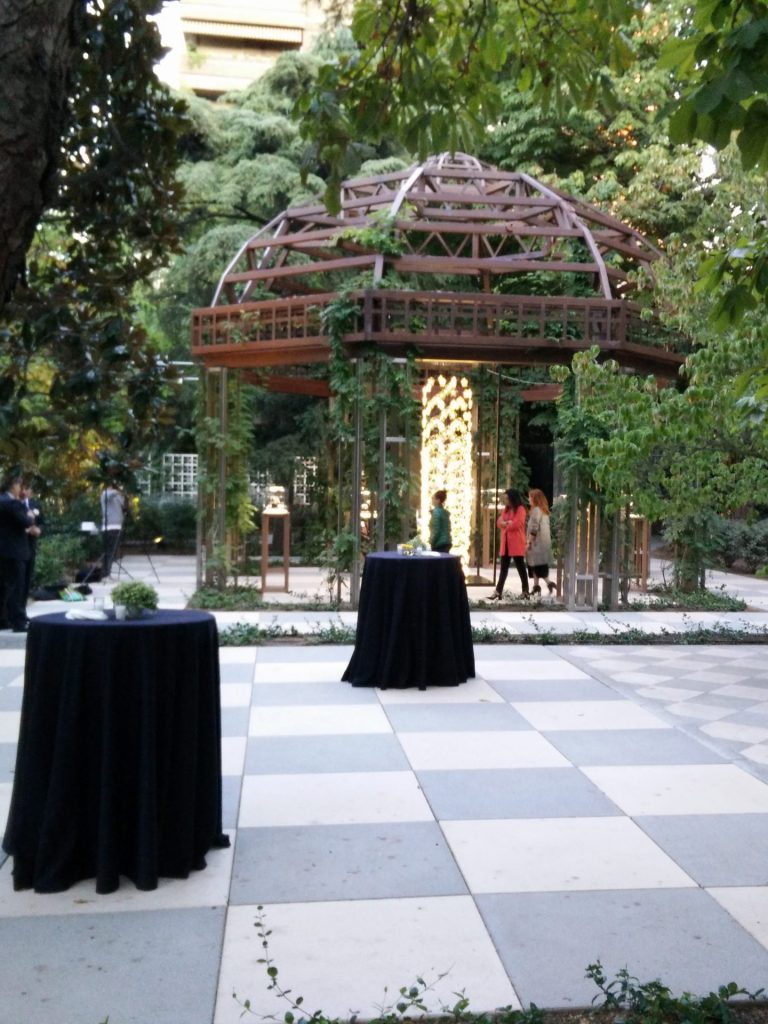
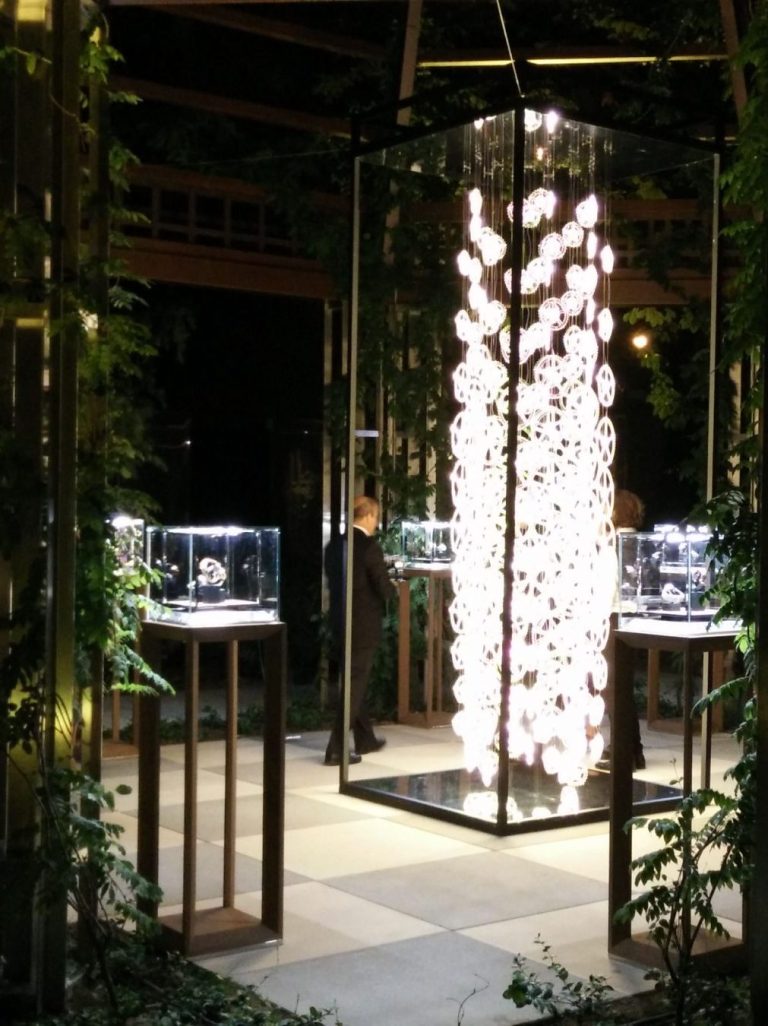
Just a few months later, a third appearance of the cogs chandelier was planned for an Art event in Madrid, in September. I knew that the installation had suffered the mechanical stress of the whole process, so I organized a complete review and maintenance of it at the warehouse. Each column of cogs was put on a table, the steel wire rebalanced, many solder joints fixed and every LED properly tested. I got some spares from the designer and I made a few repairs. We also built a metal structure to put the installation in an open area of a beautiful garden, inside a historical building of Madrid, where Bank Merch had its Head Offices. I did a first site inspection to make a plan because we were given just 12 hours for the setup and 3 to take down, mostly everything on the same day/night. All the preparation and proper packaging of every column made the installation way easier and we managed to fit in the agreed time slots.
Repeatability wasn’t part of the initial requirements for the installation so its weak spots were not an issue for a single set up; most probably knowing that several installations and international travel were required, a few details would have been designed differently. Luckily proper maintenance was possible and preparation before each reinstall plus a good quantity of care while putting back the strands of cogs in the crate gave this installation an extended life.
Ask the experts
I have many other stories about installations that needed some fixing, or repair or had to be repurposed. Every time I am involved in these activities, there is always something to learn. Why did it break, what was the cause or was there a design flaw?
Sometimes it is simply some miscalculation done on the design board, some other times some basic rules of electronics were ignored. Other situations are just “wear and tear” for a longer-than-expected duration of the exhibition. My suggestion is to be optimistic and plan for a longer life of the art installation, providing means for maintenance, repair and relocation. If it is an art piece or collection to be sold to private collectors, reliability, serviceability and ease of use and cleaning should be part of the design process.
Art installations are exempt from a number of regulations and safety checks because of their temporary nature, nevertheless, some rules and parameters should be respected for the safety of everyone. Being in a private space or in a public space makes some difference and every case needs some evaluation by the proper consultants.
